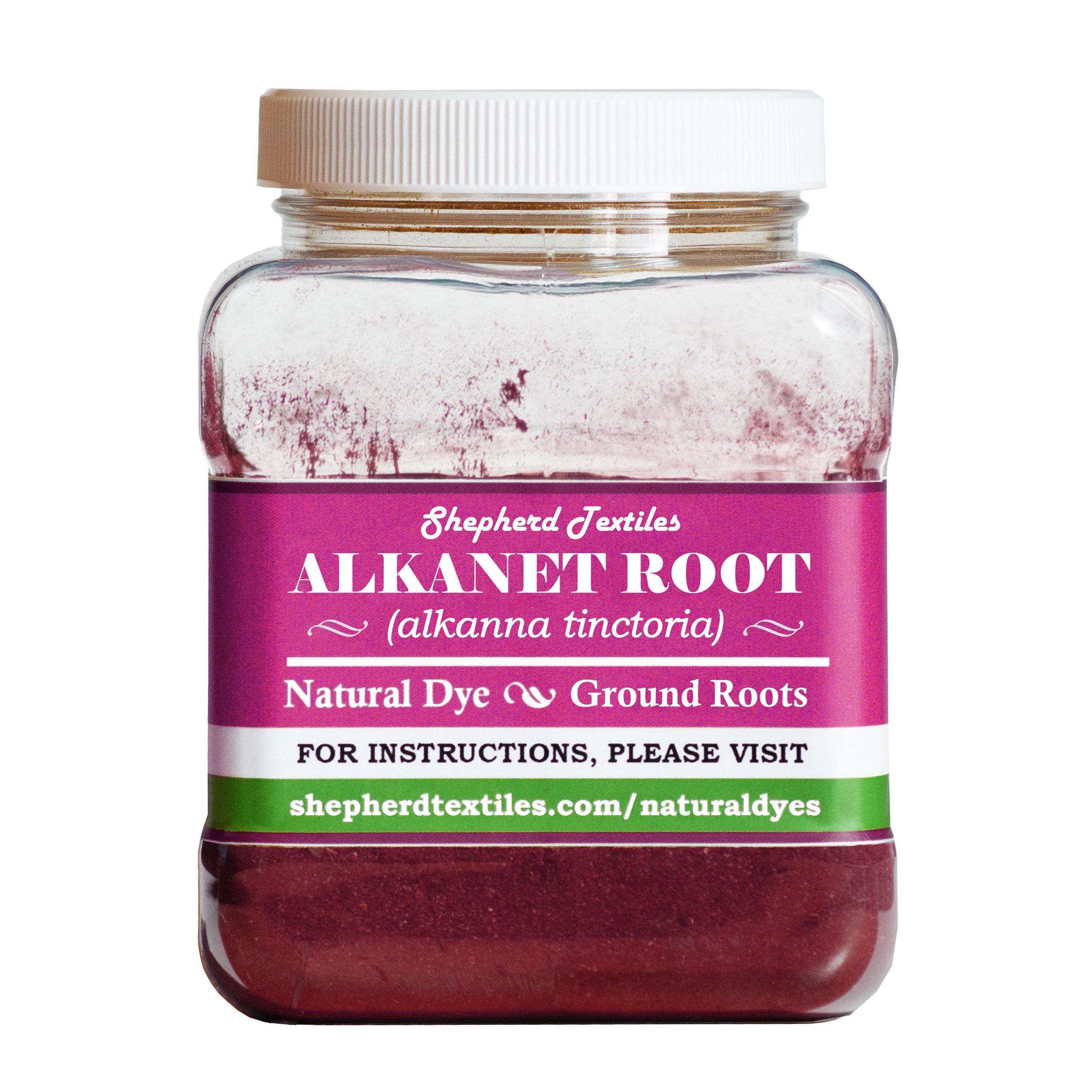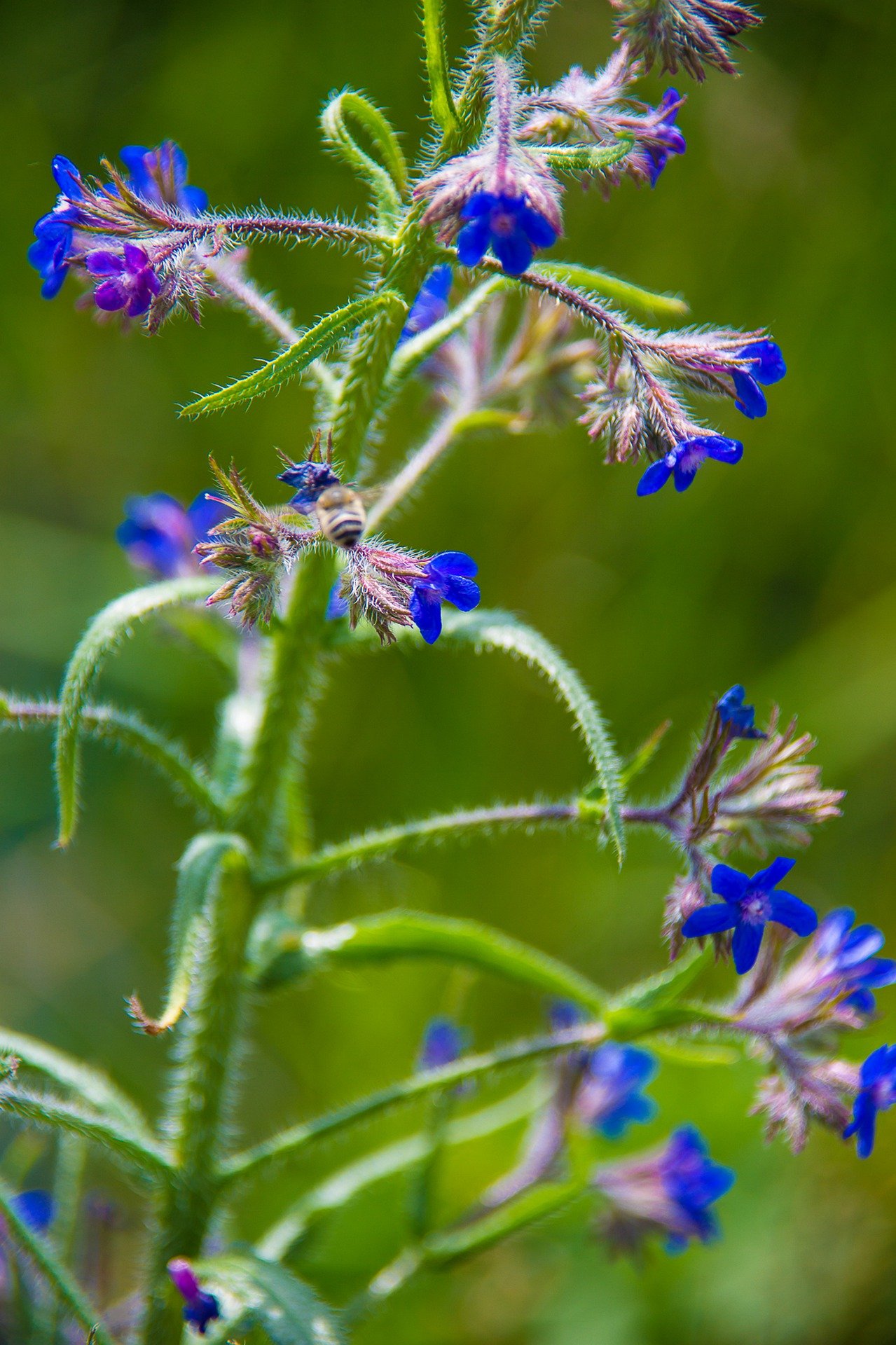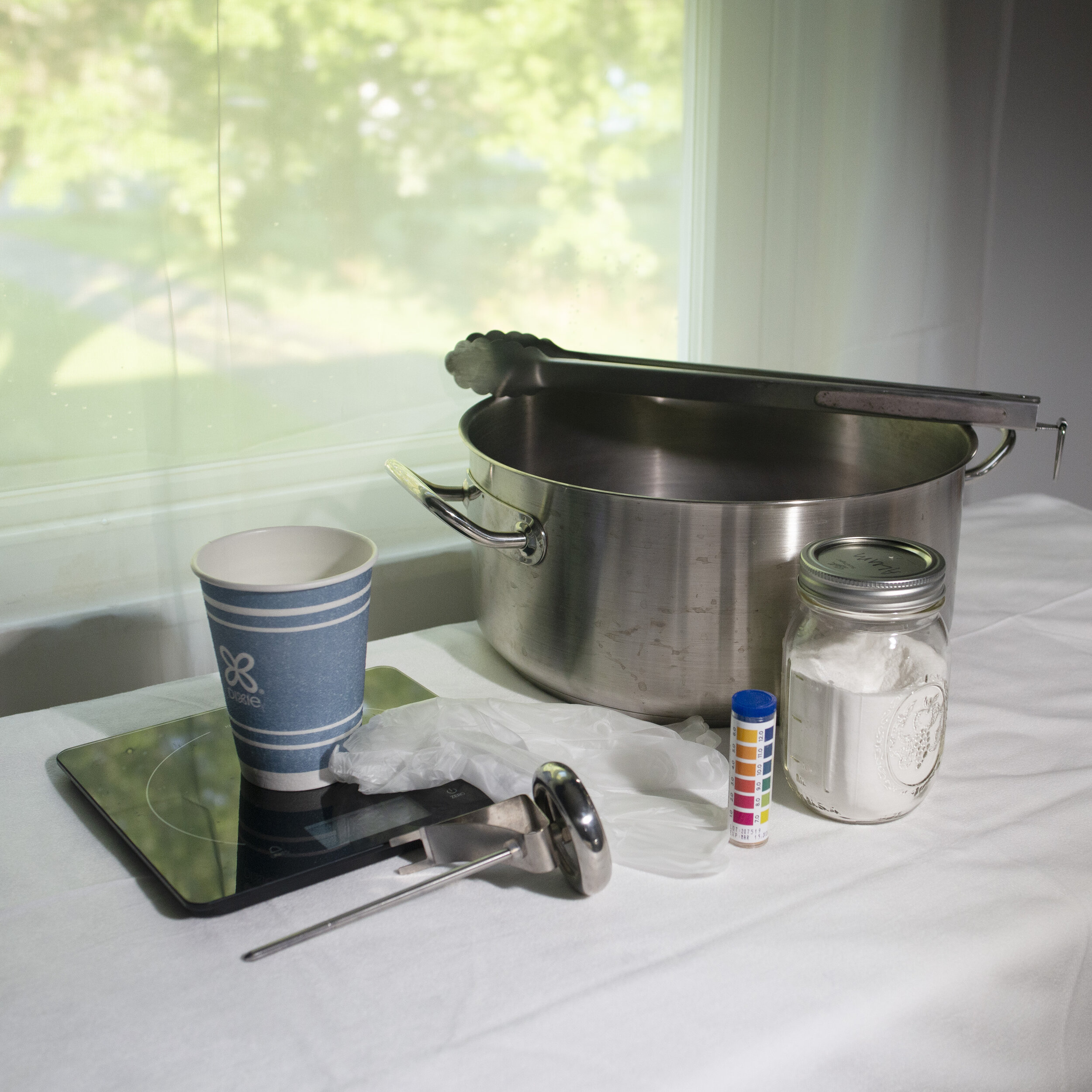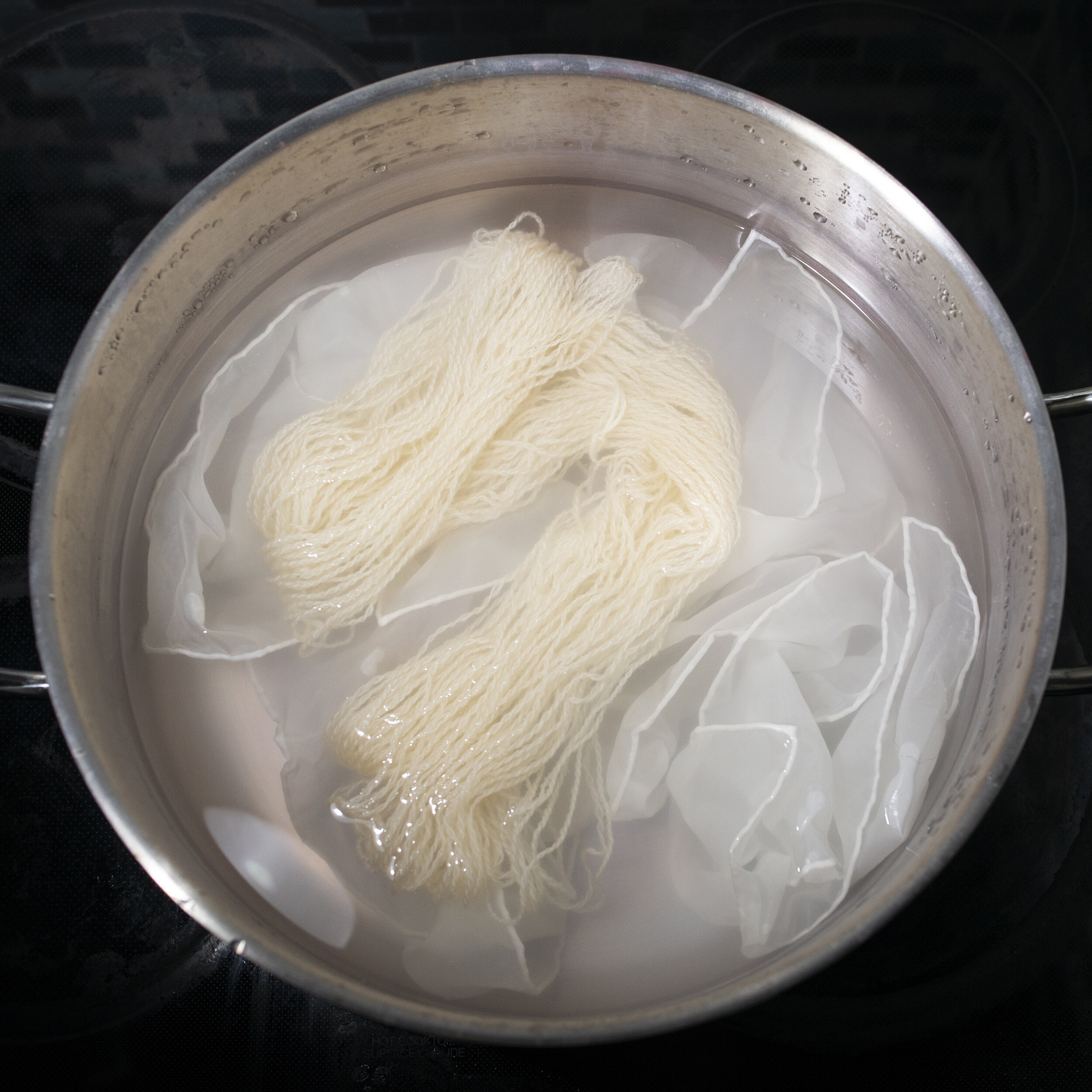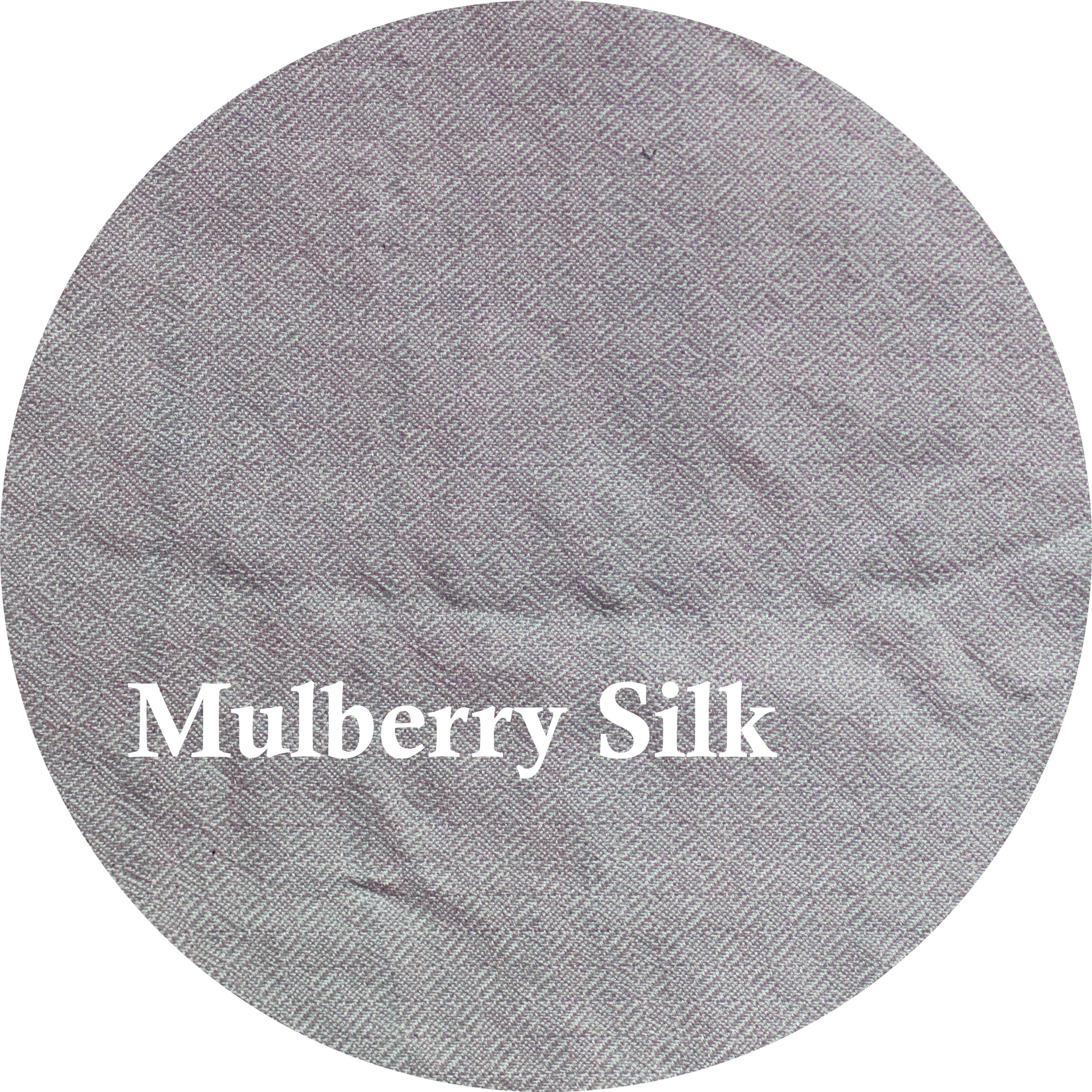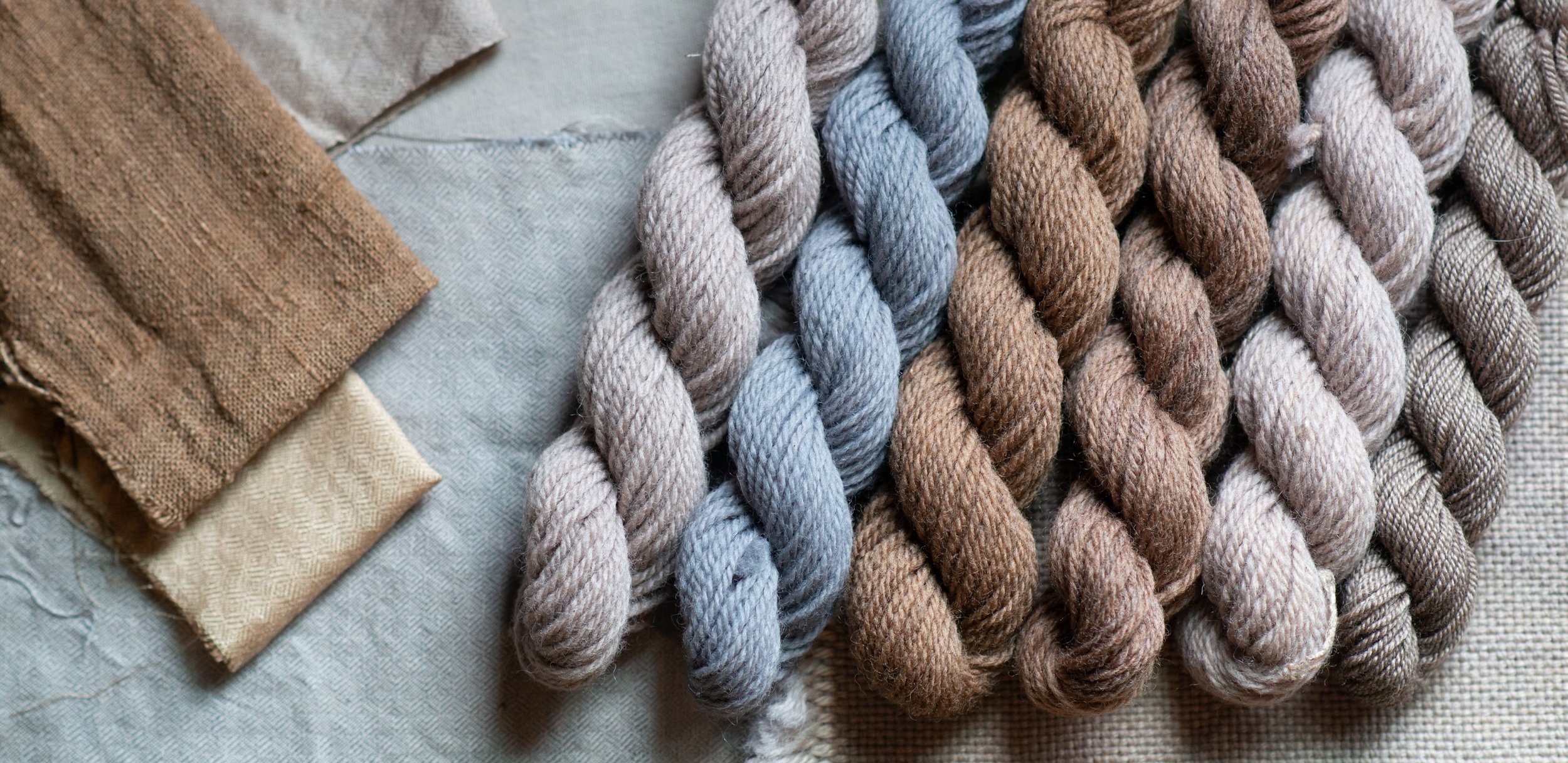
Alkanet Root
A Guide to Alkanet Root
Shepherd Textiles Alkanet Root Natural Dye contains the finely ground roots of alkanna tinctoria, the true Dyer’s Alkanet. Alkanet is an ancient dye that was used for thousands of years in the Mediterranean region; archaeologists have found recipes for it written on papyrus scrolls. However, alkanet is extremely complex to dye with. It contains at least two primary pigments, neither of which are water-soluble and both of which change color with PH. With the proper extraction and dyebath methods it can produce beautiful lavender and periwinkle blue colors; without the right adjustments it can also produce muddy browns. Please check out our tips below for getting the brightest colors out of this ancient and complex root. For best results, use 100% weight-of-fabric on wool or alpaca; expect more pale results on cotton and silk.
1. Background on Alkanet
Dyer’s Alkanet, alkanna tinctoria, is a small flowering plant native to the Mediterranean region. It produces beautiful blue flowers, but the part of interest to natural dyers is the roots. Alkanet roots contain two powerful napthaquinone compounds (relatives of the anthraquinones found in plants like madder)—alkannin and shikonin. Alkannin and shikonin are enantiomers, mirror images of each other at the molecular level, and both are potent dyestuffs that can produce a range of violet and blue shades. They are also highly biologically active. Hippocrates recommended using alkanet roots to treat ulcers as early as the 5th century B.C. (Papageorgiou et al. 1999:271); Pliny prescribed them for sores and skin burns; and today medical researchers are studying their efficacy in treating chronic skin lesions that do not respond to standard medical treatments (ibid:288).
Alkanet has a long history of use as a dyestuff in the Classical world. In the first century A.D., for example, Pliny reported that “it is used for imparting rich colours to wool.” Several recipes for dyeing wool with alkanet have been found written on papyrus scrolls from the early years of the Eastern Roman Empire (see Kreuzner 2013). Alkanet was especially valued for its ability to dye wool purple at a time when the only other route to that color was the Tyrian purple produced from murex snails. It has been calculated that, even in antiquity, wool colored with Tyrian purple sold for the equivalent of $3,000 per pound in today’s dollars (see Slater 1882:215), so it was was certainly worth the effort to try to coax purple shades from a common flowering plant.
The challenge that comes from working with alkanet is that the dyestuffs are insoluble in water and highly sensitive to PH and temperature. Researchers have suggested that there are two “fractions” of dye in alkanet roots, a “red fraction” that is soluble in oil and a “blue fraction” that is soluble in alcohol (Eser, Onal, and Oztav 2021). Each fraction has to be extracted differently, will change color depending on the PH of the dyebath, and is damaged by high temperatures. If the extraction and dyebath are not constructed correctly alkanet has a tendency to produce muddied purple and brown shades. However, when all goes well, it can give beautiful lavenders and periwinkle blues that make it worth all the effort.
A Complex Ancient Dye
2. Safety Precautions
DO NOT INGEST. This product is intended for textile dyeing, not as an herbal supplement.
Avoid eye contact. If eye contact occurs, rinse with cool water.
Not for use as a cosmetic additive; do not apply directly to skin or hair.
Open carefully to avoid spilling or creating dust. Work in a well-ventilated space, and avoid inhaling sawdust. Wear a mask if necessary while working with fine powders.
If a spill occurs, quickly wipe up with a paper towel or disposable rag.
Use only dye pots and utensils dedicated to dyeing. Do not use any pots, containers, spoons, tongs, thermometers, or other utensils that will be used for food preparation.
Alkanet Root, and all dye baths and mordant liquors made while dyeing, should be kept out of reach of children and pets. Use only with adult supervision.
Shepherd Textiles, LLC is not liable for any misuse of this product or any unintended staining of your clothing, workspace, or other property. Use only as directed.
3. Recommended Supplies
Dye pot. Use a dye pot large enough to hold all your fibers, with plenty of room for them to move around and for the liquid to circulate freely.
Metal tongs. A pair of tongs is useful for stirring and taking fabric out. Use tongs dedicated to dyeing, and not for food preparation.
Rubber gloves. Wear rubber gloves while handling mordanted/dyed fiber before it has been rinsed.
Candy thermometer. The best way to keep track of temperature is to use a candy thermometer that clips to the side of the dye pot.
Scale. Use a scale to weigh out fiber, mordant, and dyestuff.
Alum mordant. The alum usually used for mordanting is aluminum potassium sulfate, also known as potash alum. It is the same alum that you can find in a jar in the spice section at the grocery store.
Fine mesh strainer & Large coffee filters. For straining out the root before dyeing; otherwise the tiny particles will stick in everything.
Pickling lime/cal (Optional). A very tiny amount, around 1% WOF, can shift the color from lavender toward periwinkle blue.
Grain spirits. Required to effectively extract the color from the roots.
4. Preparation: Mordanting with Alum
Alkanet can be applied to animal fibers without a mordant, but pre-mordanting with alum will vastly improve the depth of the color, especially if you are aiming for purples and blues. If possible, let the fibers soak in water for a few hours before mordanting, so the mordant penetrates them deeply and evenly. Be sure to weigh the fibers first, while they are still dry, so you can calculate the correct amount of mordant.
For protein fibers (wool, silk, alpaca, etc.): Mordant with 12% alum.
Weigh out the fibers you plan to dye (while they are dry). If using alum, multiply that weight by 0.12 to get the correct amount of alum powder.
Fill your dye pot with hot tap water, leaving enough room for the fiber.
Weigh out the correct amount of mordant and pour it into the dye pot. Mix with a spoon or metal tongs until it has dissolved.
Gently place your fibers into the mordanting solution.
Heat mordant bath to 180F and maintain heat for 1 hour. If you don’t have a candy thermometer, you will have to estimate the temperature. At 180F, steam vapor will be rising off the water but it will not be bubbling. If your mordant bath starts to bubble, turn down the heat.
Stir every 15 or 20 minutes to make sure fibers mordant evenly. If they do not, the dye will take better in some places than others.
After an hour, remove from heat and let cool to room temperature. Once cool, you can immediately proceed to rinsing, or you can leave the fibers to steep overnight in the mordant bath. This will improve results, especially when dyeing thick or tightly woven fabrics.
Remove cooled fibers. Wearing rubber gloves, gently squeeze excess mordant solution back into the pot. Rinse briefly in lukewarm water. The fiber does not need to be thoroughly washed, but any excess alum should be rinsed out. Set aside until ready to dye. Keep out of reach of children and pets.
Dispose of mordant solution according to local guidelines.
For cellulose fibers (cotton, linen, etc.): Scour well and treat with a tannin before mordanting.
Alkanet has a modest affinity for plant fibers like cotton. For good results, the cotton needs to be thoroughly tanned and mordanted before dyeing.
Scour cellulose fibers well. Traditionally this is done in a highly alkaline soda ash solution. Add 2 tsp of soda ash and 1 drop of dish soap to a 5-gallon dye pot. Add cellulose fibers and heat to 180F-190F for an hour, stirring occasionally. Remove from heat, and when cool enough to handle, rinse and wring out well. Household detergents like Tide© are also alkaline (PH 11), so you can also toss the fiber in a washing machine on a high-temperature cycle with plenty of detergent. This will not clean them nearly as deeply as simmering with soda ash, but it will yield much better results than not scouring at all.
Apply a tannin to the scoured fabric. We prefer Sumac Extract at 5% weight-of-fabric, because it is a clear tannin that will not alter the final hue of the fabric. Myrobalan Extract at 5% is another good choice. To use, fill your dye pot with hot water, dissolve the extract into the dye bath, and simmer the fibers for an hour. Allow to cool—for best results, steep overnight. This process will make the cotton or linen more receptive to mordants. After steeping, remove fibers and squeeze out the excess liquid.
Mordant as described above for protein fibers. You may wish to add 1% soda ash to the mordant bath to neutralize the PH.
5. Preparation: Making an Alkanet Tincture
Alkannin, the primary purple and blue pigment in alkanet roots, is almost entirely insoluble in water. It is, however, soluble in alcohol, so the best method of extracting the dyestuffs is to mix the ground roots with grain spirits and let them steep for a few days. We use bottom-shelf vodka, but any clear spirit should do.
Weigh out the quantity of alkanet root required; we generally recommend 100% weight-of-fabric (whatever the dry weight of the fibers is, use the same weight of alkanet root powder).
Place the alkanet root in a glass mason jar with enough room left for a few cups of liquid.
Add at least 1 cup of grain spirits per ounce of alkanet root: you want there to be plenty of liquid to pour off into the dye bath. We use cheap 100-proof vodka, but any clear spirit should do. Alkannin is highly soluble in ethanol, so high-proof spirits like Everclear will work fine, but are not necessary*.
Mix the spirits and root powder well, then seal the jar. Make sure to label it so nobody mistakes it for something edible, then let the roots steep for a minimum of 24 hours. We recommend 3-5 days of steeping for best results.
When you are ready to build the dyebath, carefully unseal the jar and pour the tincture through a coffee filter into the dyebath; the goal is to pour off the liquid while leaving as much of the root powder as possible in the bottom of the jar. Alkanet root grinds very finely, and if they get in the dyebath the little particles of root will cling tenaciously to your fiber.
*CAUTION: Grain spirits are flammable. Store away from heat sources and open flame. Most importantly, do not add to the dyebath while the heat is on. Fill your dye pot with water first, make sure the heat is off, then decant the tincture into the dye bath. Seal the jar, cover the dye pot with a lid, then slowly raise the heat. Keep a lid on the dyepot when not adding fiber or stirring, to prevent alcoholic vapors from escaping or igniting; avoid breathing the vapors. When it is added to the water in the dyebath the alcohol in the tincture will be diluted to a fairly low concentration, but it is still better to be safe.

The Recipes
6. Recipe: Periwinkle Blue
The alkannin in alkanet is highly sensitive to PH: it shifts from red at PH6 to blue at PH9. By carefully adjusting the alkalinity of the dye bath, it is possible to coax a beautiful periwinkle blue from alkanet roots. The most important factor in getting good colors is to keep the temperature low—do not let it get hotter than 140F or the color will start to muddy and fade toward brown. Alkanet also attaches to fiber very slowly; do not be discouraged if, after an hour in the dye pot, the fibers still have a sort of non-descript yellowish hue. The magic generally starts to happen by the end of the second hour.
Make an alcoholic tincture of Alkanet Root, as described in Section 5. Use 100% weight-of-fabric (WOF) of Alkanet Root.
Fill your dye pot with just enough warm water for your fibers to move around freely and dye evenly; in this case, we want the dye bath to be as concentrated as possible.
Adjust the PH to 8.5 with calcium hydroxide (pickling lime or cal). To use, measure out about a teaspoon and put it in a disposable cup. Cover with half a cup of warm water and mix well. Let it sit for 10 minutes to settle. Then, pour off some of the cloudy liquid into the dye bath and check the PH with PH strips until you have hit about PH 8.5. Better to use too little than too much; a lower PH will just tend a little more toward purple.
Make sure the heat is off, and gently decant your Alkanet Root tincture into the dye bath. We recommend pouring it through a strainer lined with a coffee filter; try not to let any of the ground roots get in the dyebath. You should notice a color change as soon as the tincture hits the water, from red-violet to a darker purple-blue. Seal the jar of tincture and store away from the heat.
Add your alum-mordanted, wetted fibers to the dye bath.
Raise the temperature to 140°F and maintain for three hours. Stir occasionally to make sure everything dyes evenly. We recommend keeping the dye pot covered as much as possible, because lots of liquid will evaporate over the course of 3 hours. You may need to refresh it with water to make sure your fibers can still move around freely.
After three hours, remove pot from heat and allow to cool to room temperature.
Remove the fibers and rinse briefly in lukewarm water. Hang them up to dry to help the color set; make sure to hang them up in the shade somewhere where dripping dye will cause no damage. Direct sunlight may fade the color before it has had time set.
For the final rinsing, we recommend using a PH-neutral detergent like Synthrapol that is designed to wash out loose dye. Follow the manufacturer’s directions for best results. Alkanet Root is extremely sensitive to PH, and using a strongly acidic or alkaline detergent may shift the color in unwanted ways. CAUTION: Alkanet will bleed if not thoroughly rinsed out after dyeing.
Hang up to dry.
All images and text are copyright of Shepherd Textiles, LLC. Do not reproduce without written permission and attribution.


